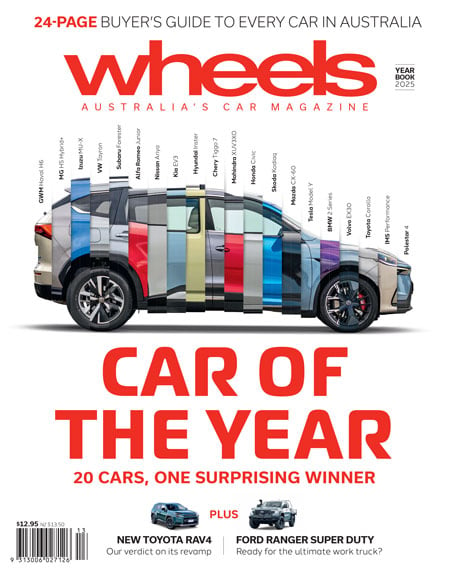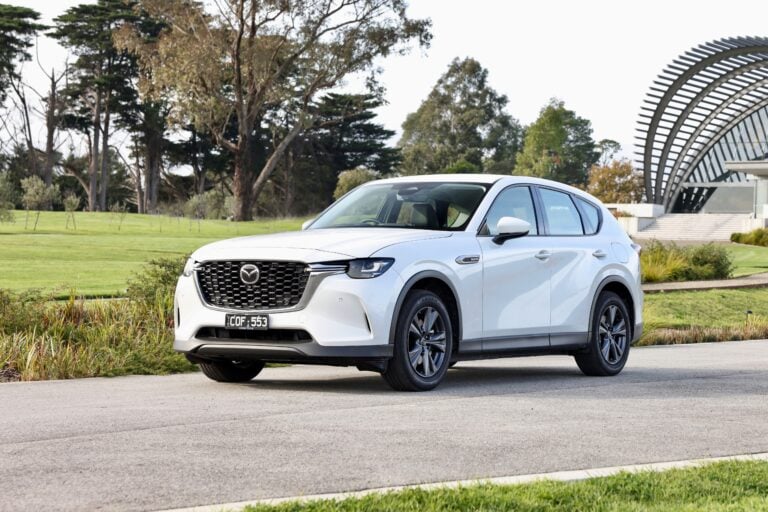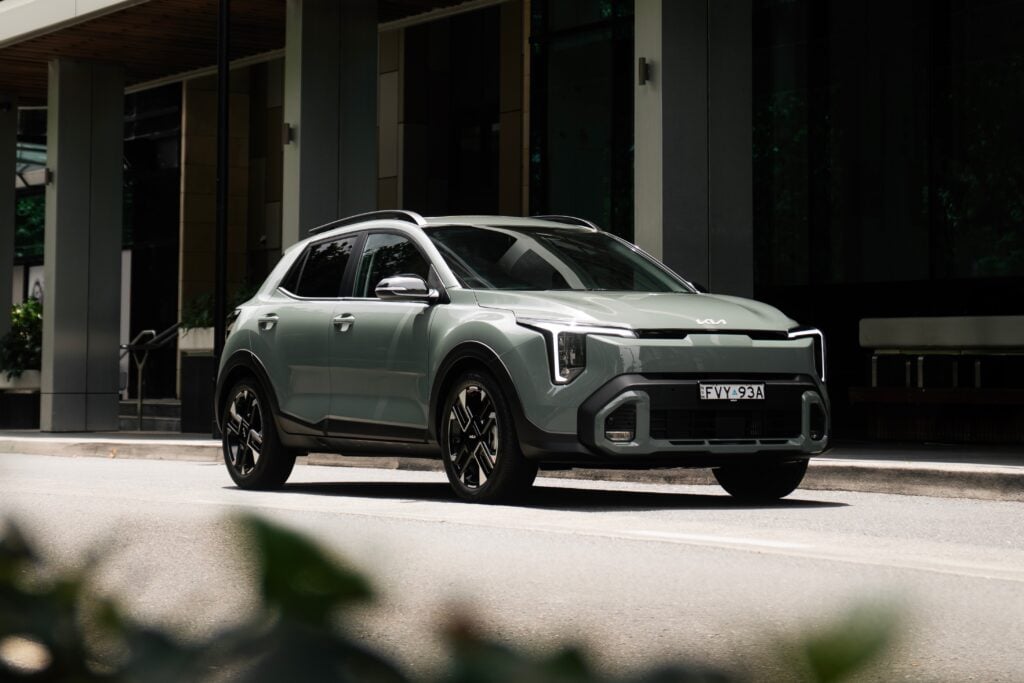
- Price: $42,060 plus on-road costs
- Engine: 1998cc four-cylinder DOHC petrol
- Max power and torque: 114kW (@ 6000rpm)/200Nm (@ 4000rpm)
- Transmission: six-speed automatic, front-wheel drive
- Fuel consumption (claimed/on test): 6.3L/100km, 8.8L/100km
- Fuel type/tank size: 91RON, 51L
- L/W/H/WB: 4395/1795/1540/2655mm
- Kerb weight: 1468kg
- Boot: 317L seats up/1281L seats folded
- 0-100km/h: 10 seconds (est)
| Rating |
|---|
Things we like
- A real driver’s option in the small SUV segment
- Best-in-class cabin quality
- Loaded with safety equipment
Not so much
- Performance and efficiency bested by hybrid rivals
- Small boot and rear seat limit appeal to families
- LE’s tasteful interior trim isn’t available on other CX-30s

Mazda is a brand that Australians love, and have done so for decades. Despite not offering any in-vogue hybrids in its most popular models or any EVs, the “Zoom Zoom” brand has sold over 32,000 cars in Australia this year (to the end of April) and with a slew of new product due in the next year – such as the next CX-5 – its appeal will likely continue for some time yet.
The CX-30 small SUV is selling reasonably well in its segment – not quite as well as the older, cheaper and smaller CX-3, but better than the Kia Seltos – with almost 4000 sales so far this year. In 2024, it received a small update with new technology and features across the range and a simplified model line-up for better value than before. Is it worth consideration in the small SUV segment?
Price and equipment
While Mazda simplified the Australian CX-30 line-up in 2024, there are still a number of available models, either with ‘G20’ 2.0-litre or ‘G25’ 2.5-litre engines.
2025 Mazda CX-30 pricing (plus on-road costs):
| G20 Pure 2.0L FWD | $34,060 |
|---|---|
| G20 Evolve 2.0L FWD | $35,960 |
| G20 Touring 2.0L FWD | $39,760 |
| G25 Touring 2.5L FWD | $41,260 |
| G20 Touring LE 2.0L FWD | $42,060 |
| G25 GT SP 2.5L FWD | $43,260 |
| G25 GT SP 2.5L AWD | $45,260 |
| G20 Astina 2.0L FWD | $44,960 |
| G25 Astina 2.5L FWD | $46,460 |
| G25 Astina 2.5L AWD | $48,460 |
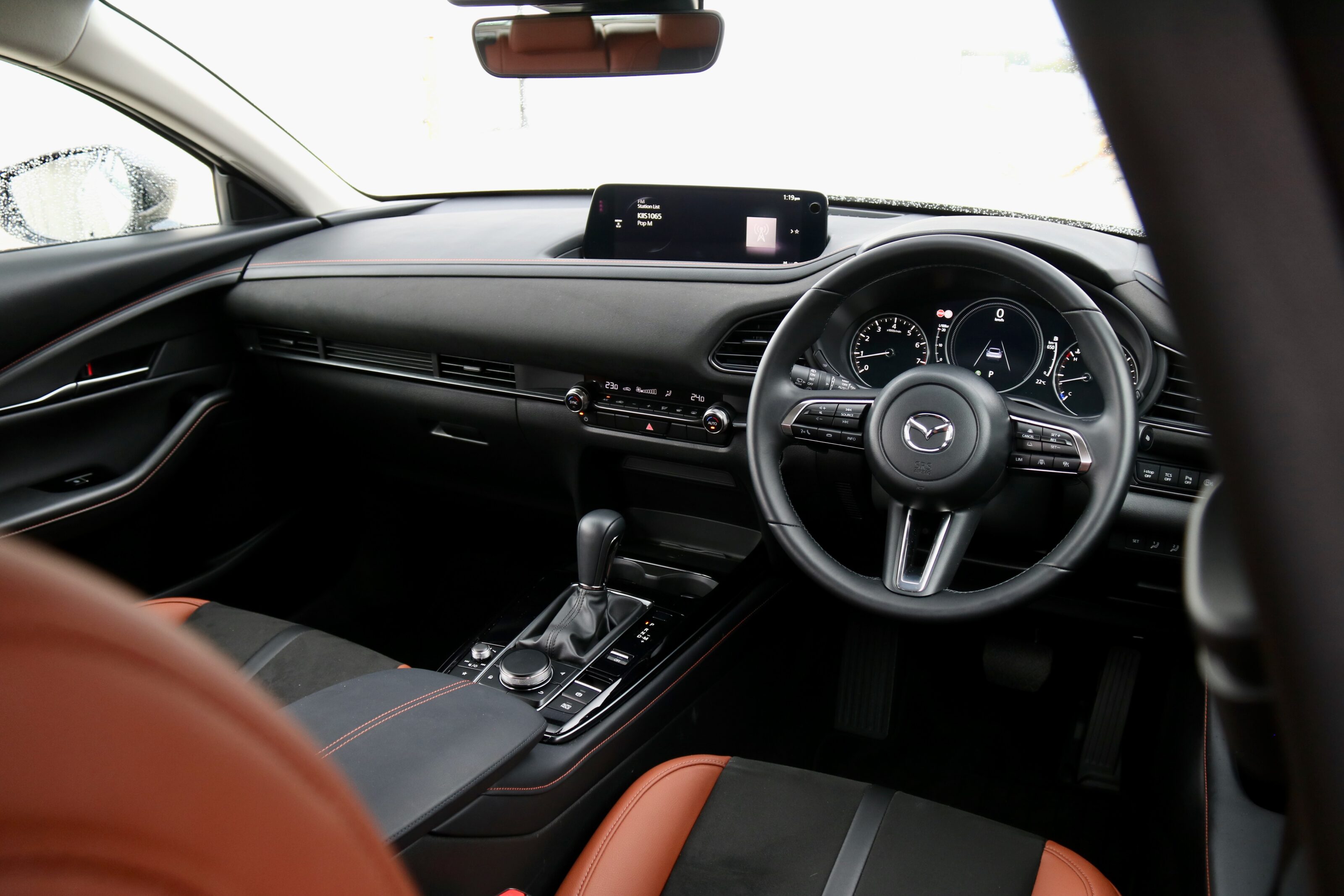
Mazda CX-30 Touring LE standard equipment:
- 18-inch alloy wheels
- Gloss black exterior highlights: wheels, mirror caps and grille
- Dusk-sensing automatic LED exterior lighting
- Rain-sensing automatic wipers
- Keyless entry with push button start
- Heated and auto-folding mirrors with auto-dipping in reverse
- Dual-zone automatic climate control with rear air vents
- Synthetic leather and suede upholstery
- 12-way electric driver’s seat with memory
- Leather steering wheel with paddle shifters and gearknob
- 10.25-inch touchscreen
- Wireless and wired Apple CarPlay and Android Auto
- Satellite navigation
- AM/FM/DAB+ digital radio
- Eight-speaker sound system
- 2x USB-C ports
- Wireless phone charger
- Mazda Connected Services with features such as stolen vehicle assistance, a vehicle locator and remote locking functionality
CX-30 Touring LE safety features:
- Seven airbags
- Autonomous emergency braking (AEB) with pedestrian and cyclist detection
- Adaptive cruise control with traffic jam assist
- Lane keeping assistance with lane departure warning
- Blind-spot monitoring
- Front and rear cross-traffic alert
- Adaptive lane guidance
- Driver attention monitoring
- Traffic sign recognition
- Auto high beam
- Head-up display
- Automatic rear low-speed braking
- Front and rear parking sensors
- 360-degree camera
- Tyre pressure monitoring
The CX-30 range received a five-star ANCAP safety rating in 2019 against older protocols with
scores of 99 percent in adult protection, 88 percent in child protection, 80 percent in road user
protection and 76 percent in safety assist.
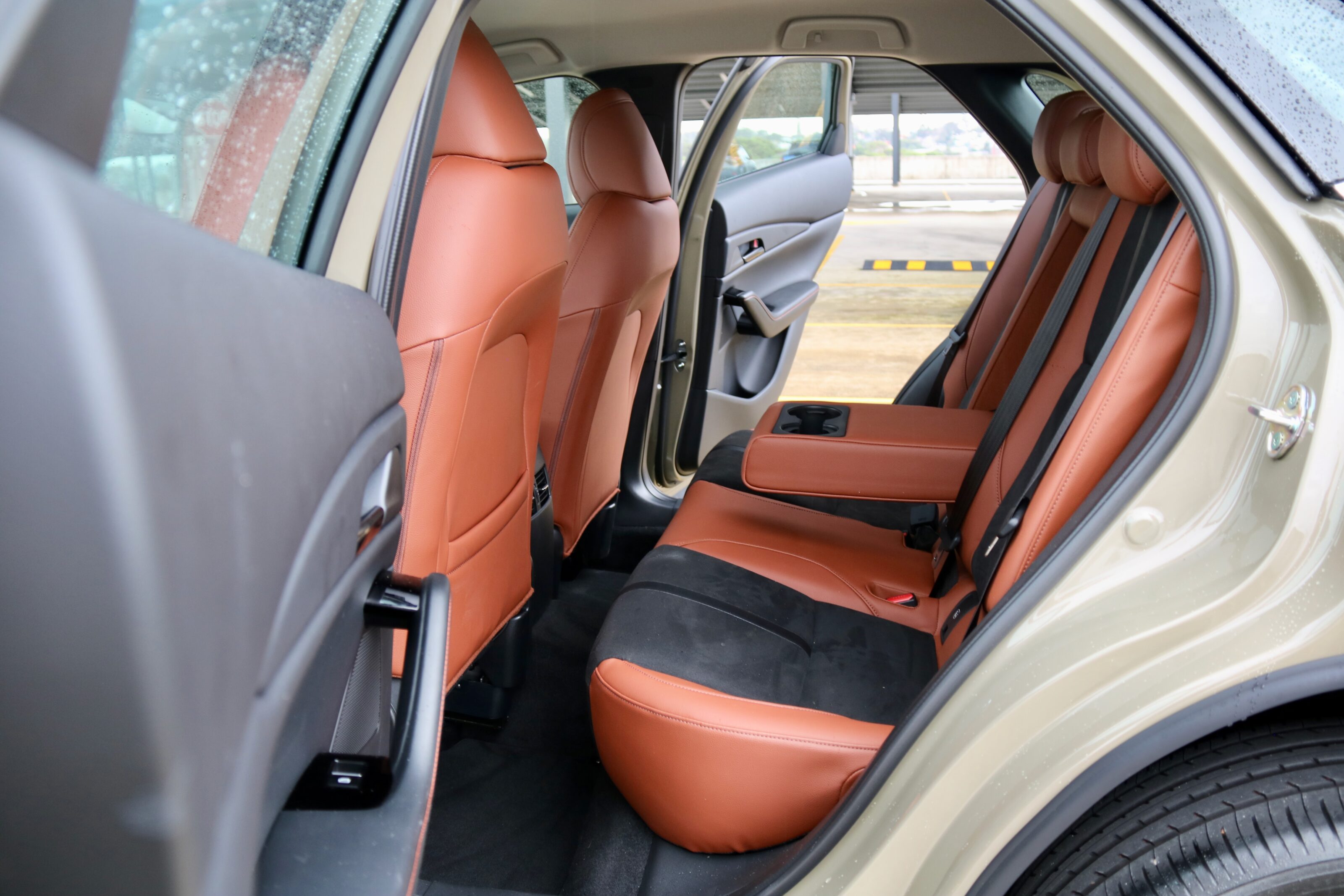
Performance and economy
Under the bonnet of the Mazda CX-30 Touring LE is a naturally aspirated 2.0-litre four-cylinder petrol engine making 114kW of power and 200Nm of torque. The whole range uses a six-speed automatic transmission and power is sent solely to the front wheels in 2.0L cars or optionally to all four wheels on some 2.5L variants. Surprisingly for a car in 2025, there’s no hybrid or turbocharging assistance.
Mazda claims fuel consumption of 6.3L/100km on a combined cycle with claimed CO2 emissions of 147g/km and we found that to be optimistic with a test average of 8.8L/100km over our time with the car, which was skewed towards less efficient urban driving. The CX-30 range runs on 91RON regular unleaded, and the Touring LE features a 51-litre fuel tank.
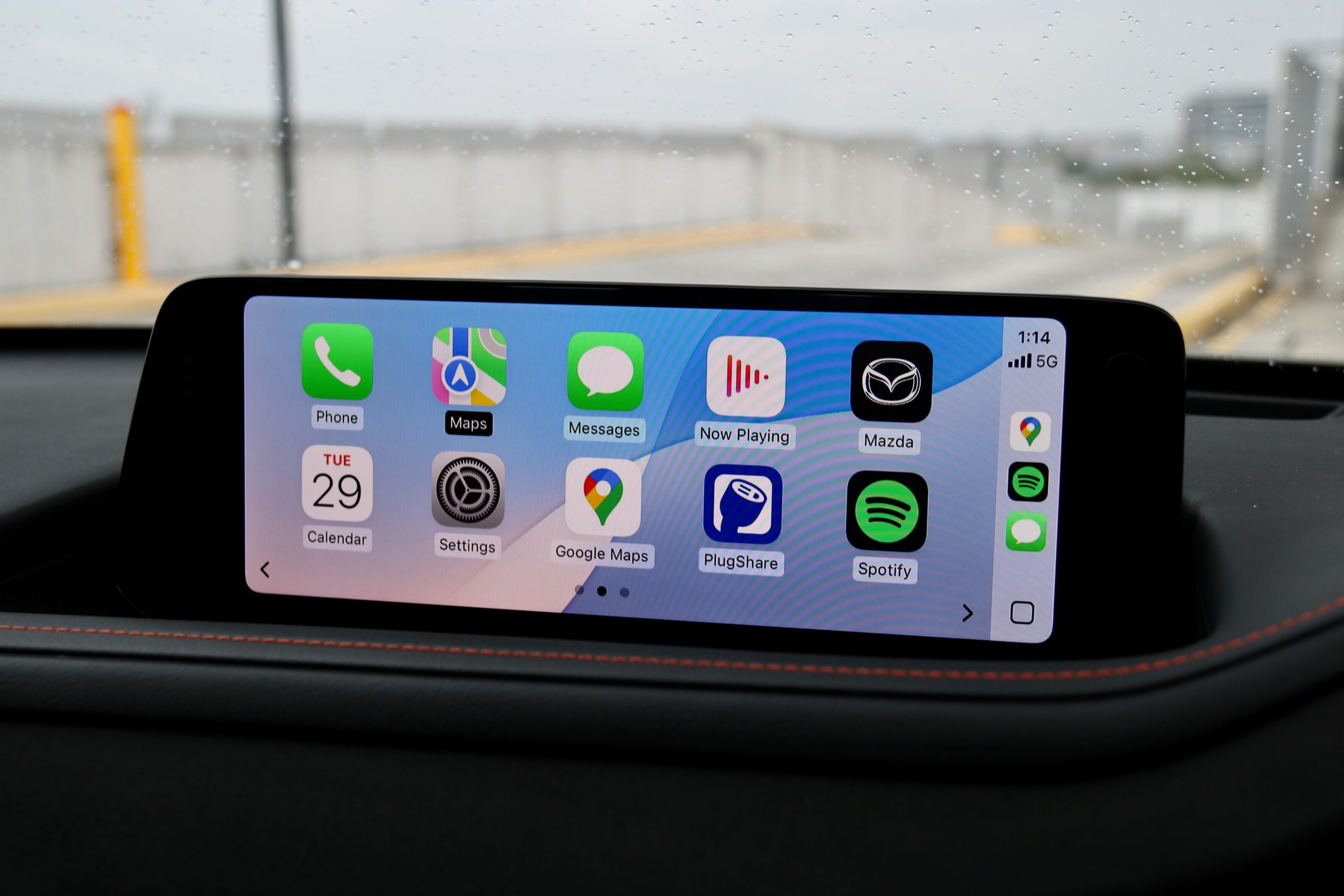
Interior comfort, practicality and boot space
As we’ve come to expect from modern Mazda products, the cabin of the CX-30 exudes a strong sense of elegance and almost-luxury levels of fit and finish. In fact, it feels more luxurious than an Audi Q3, which starts at a much higher price. There are lovely materials like the thick padded and stitched soft touch dashboard piece, elegant three-spoke steering wheel and, in the case of the Touring LE spec, cool synthetic black suede and terracotta leather trimmings on the dashboard and seats that we wish was available in other CX-30 models.
Front seat storage is good as well, with big door bins and cupholders, a big box underneath the moving centre console lid and a tray underneath the dashboard with a wireless phone charger that’s much more effective than the brand’s upper large SUVs like the CX-60.
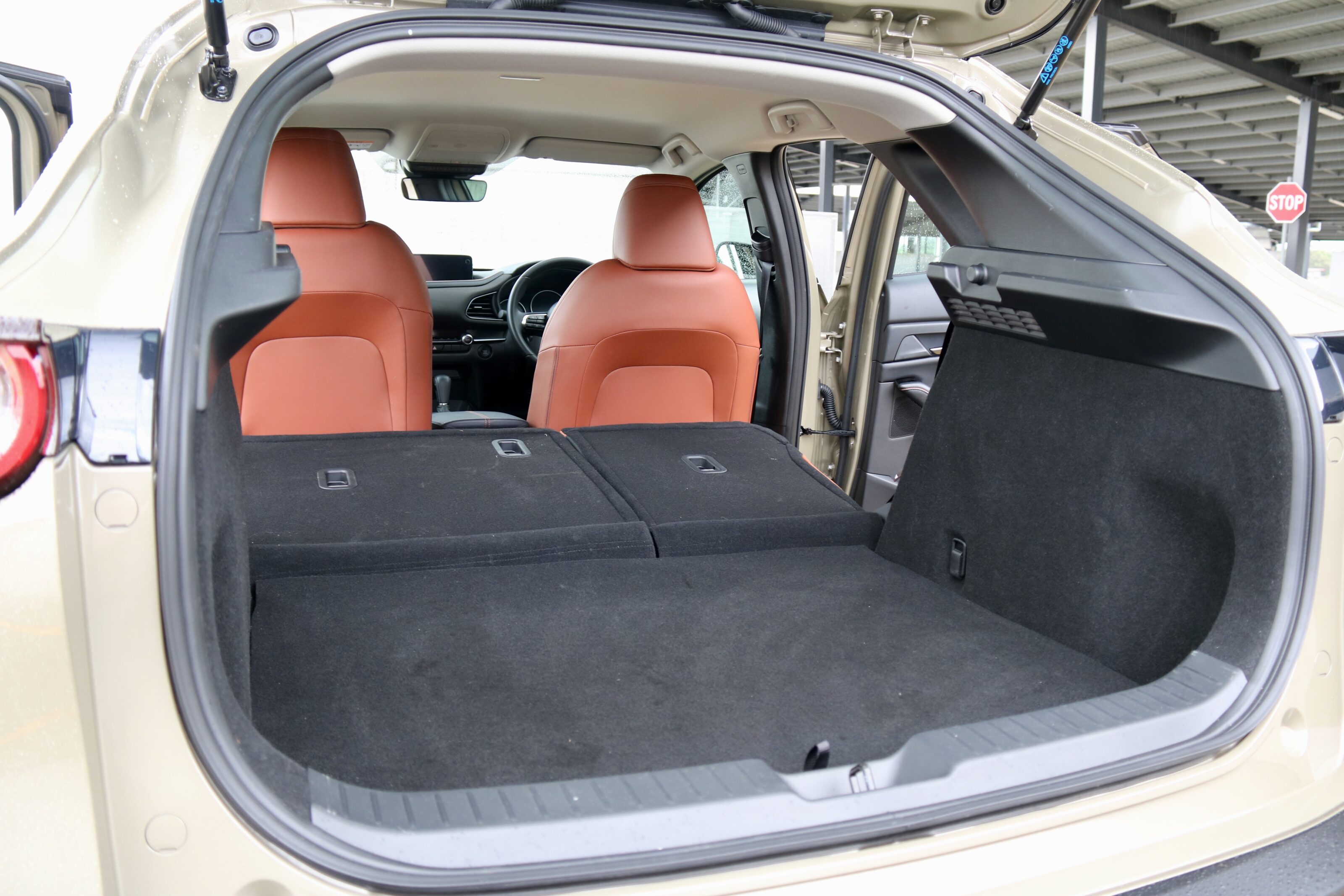
The Touring LE features a 10.25-inch infotainment screen that’s quite minimalist in its layout but is quite easy to use. In a move that might annoy some, it’s only available to be used via touch when using Apple CarPlay or Android Auto – it otherwise must be used with the controller wheel that sits in between the seats.
I’m a fan of this move because it’s a lot less distracting than using the screen solely as a touchscreen, though some don’t like it because of how far away the screen is. Mazda says that’s to keep your eyes in line with the road for a safer driving experience and they have a point.
Where the CX-30’s cabin loses points, however, is in the rear seat as it’s just not as spacious as many competitors. While the actual room available is okay – two six-footers should be fine for legroom and headroom – the small windows make it feel smaller than it actually is. Thankfully, there are door pockets, a central armrest with cupholders, a singular map pocket and air vents, though some charging ports would also be appreciated.
The boot of the CX-30 range measures 317 litres with the seats up, and 1281L with them folded, offering some of the smallest amount of room in the segment – a Qashqai, for example, features a 504L boot with 1447L available with the seats folded. On the plus side, the boot lip is low, and it’s also well finished – the rear seats also fold almost completely flat too.
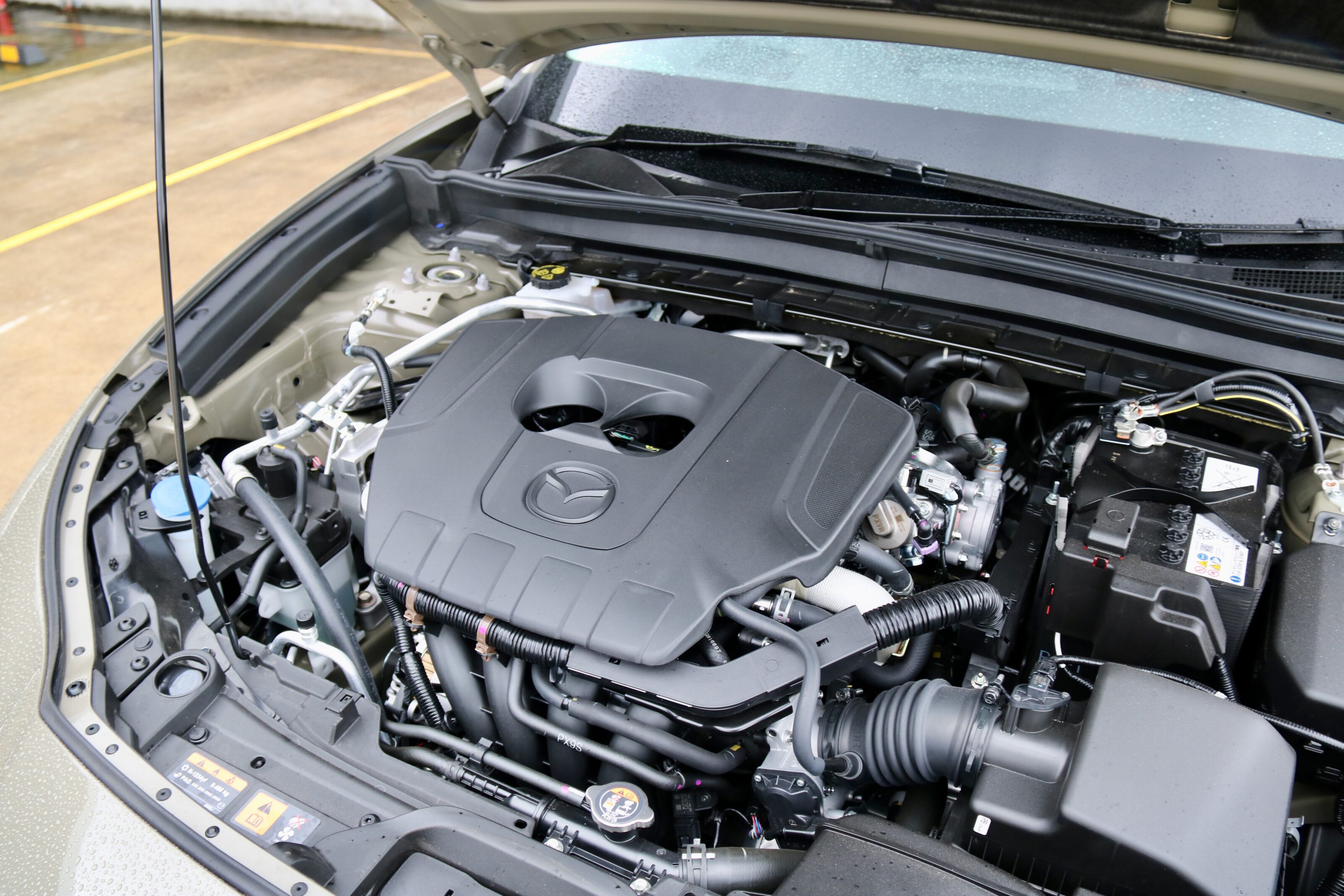
On the road
While the CX-30’s cabin has its positives and negatives, the driving experience is almost all positive – especially for those who care about how a car drives. The CX-30’s handling is great, with a real sense of fun from the meaty steering feel to the tight chassis. Despite the sporty attitude, the ride is also comfortable and only larger bumps are really felt in the cabin. For those wanting a fun driving experience in the small SUV segment, the CX-30 is the way to go.
Unlike a lot of older Mazda products, the CX-30’s cabin is impressively hushed for road noise and even at highway speeds, conversation can easily be held with your passengers. We also love Mazda’s active safety features, which are so well engineered and can be quite subtle if you want them to be, or much noisier – it’s your choice.
Don’t like the audible warnings? Press the mute button to the right of the steering wheel. Don’t want the speed limit warning to be heard? Turn it off completely – and unlike a lot of other brands, it stays turned off permanently. The 360-degree camera is crisp and we love that a head-up display is standard across the range. Other brands could learn a lot from Mazda’s safety features.
From a performance perspective, the CX-30 Touring LE is no firecracker. The 2.0-litre engine is not
particularly fast, but nor is it that slow either. Around town, it’s totally fine, though at highway speeds it likes to rev. That’s no bad thing, as it sounds good and it’s engaging, but just know that if you’re doing more higher speed driving, we’d suggest upgrading to the larger 2.5-litre engine as it’s got 52Nm more torque and 25kW more power, but the real world fuel consumption difference is tiny. The six-speed automatic transmission is also excellent – it’s intuitive and feels great in a segment full of CVTs and unrefined dual-clutch ‘boxes.

Service and warranty
The CX-30 is covered by a simple five-year/unlimited km warranty, which looks short against rivals like MG and Nissan, though it at least includes five years of roadside assistance regardless of where the car is serviced.
The CX-30’s service intervals are once-yearly/every 15,000km (whichever comes first) and five years/75,000km of servicing costs $2251 ($450 per service), which isn’t cheap.
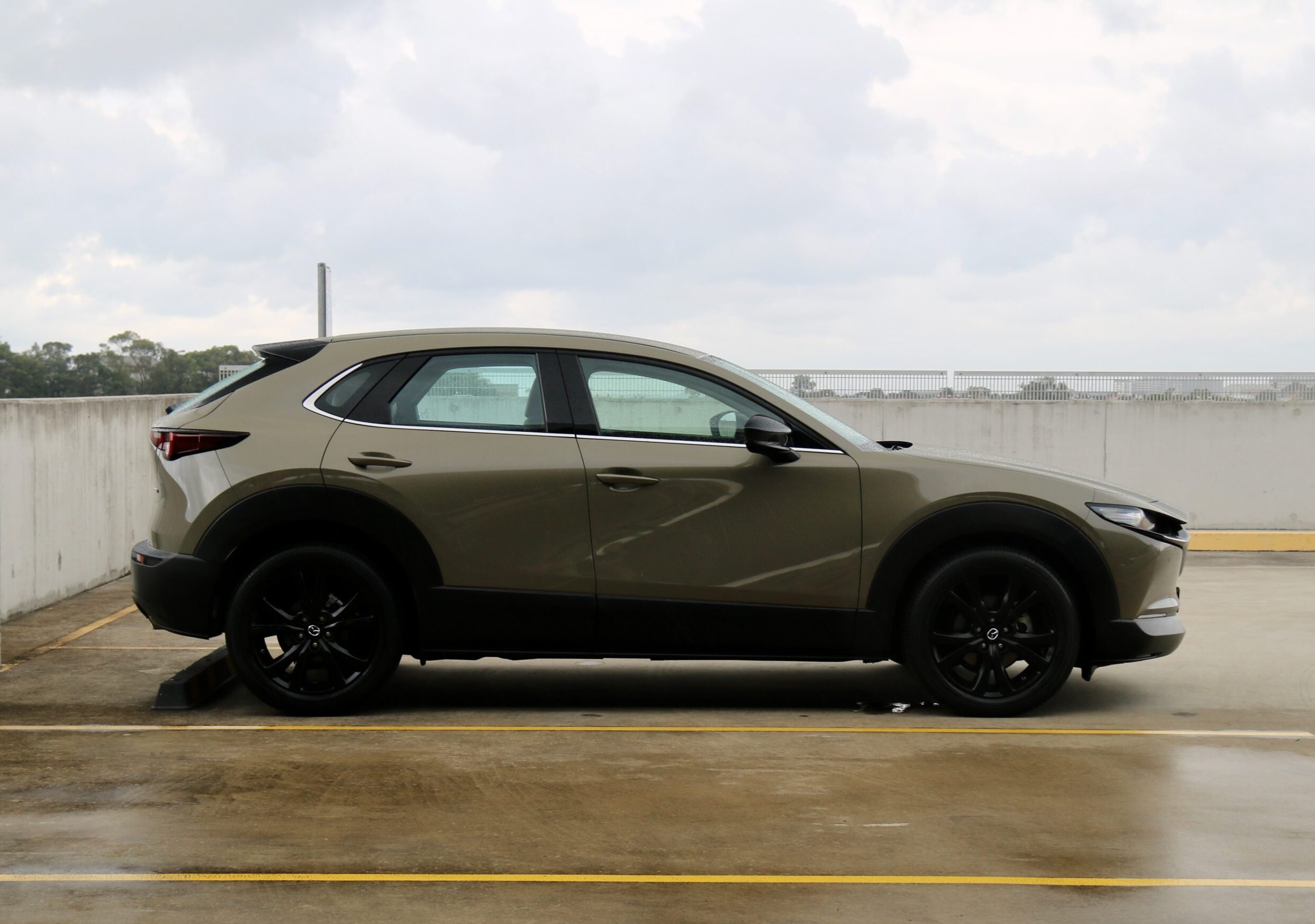
Verdict: should I buy a 2025 Mazda CX-30 Touring LE?
There’s no doubt that the CX-30 is a solid choice in the small SUV segment. It looks stylish and exotic, its cabin quality is excellent, it’s well equipped – particularly with safety features – and it’s great to drive with keen handling and a well-tuned suspension set-up.
Counting against the CX-30 are its small rear seat and boot, its expensive service pricing and its old-school drivetrain against more powerful and efficient hybrid alternatives. But if you like to drive, the CX-30 is a compelling option in the segment and even if you don’t, there’s more than enough to recommend it for smaller families.

